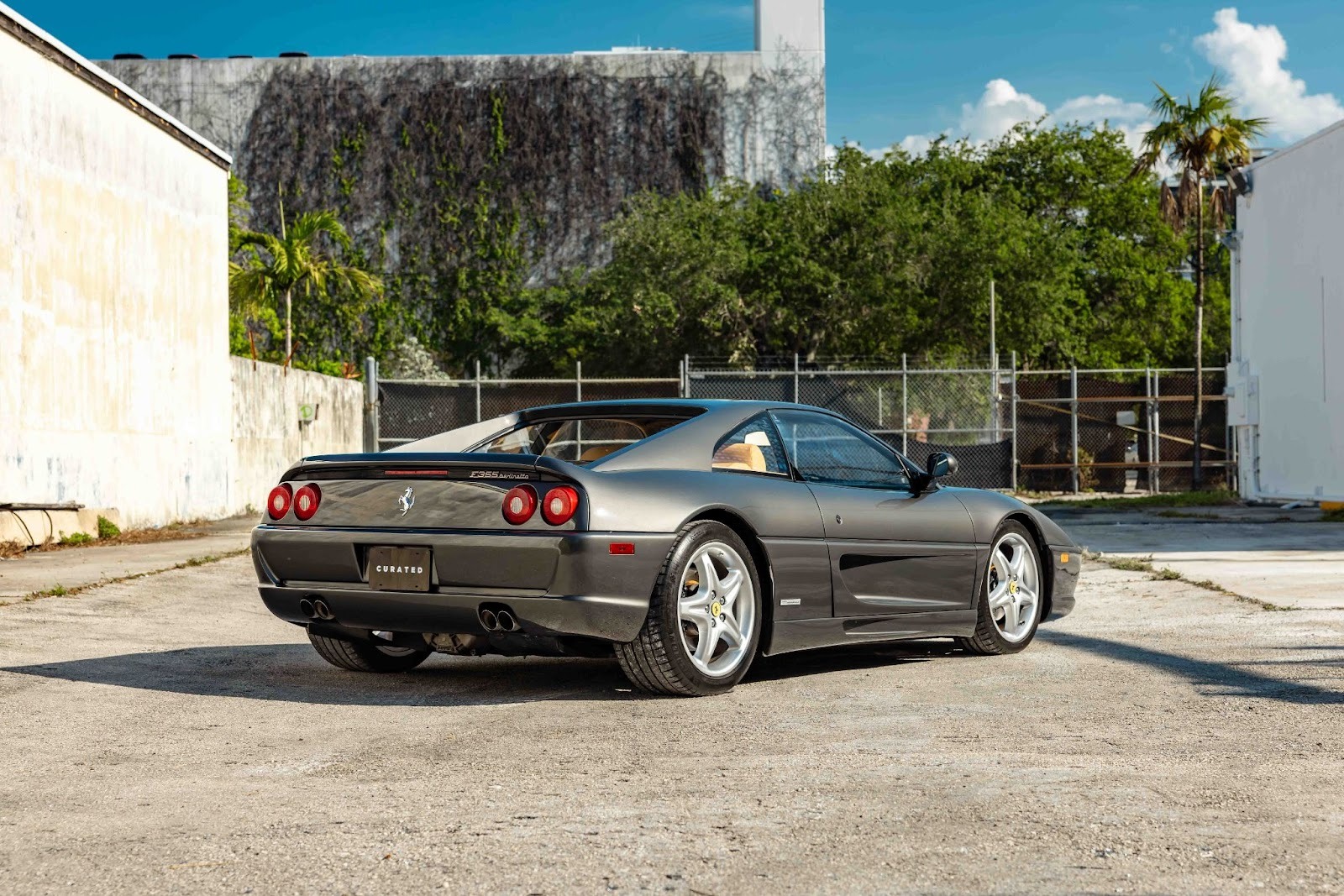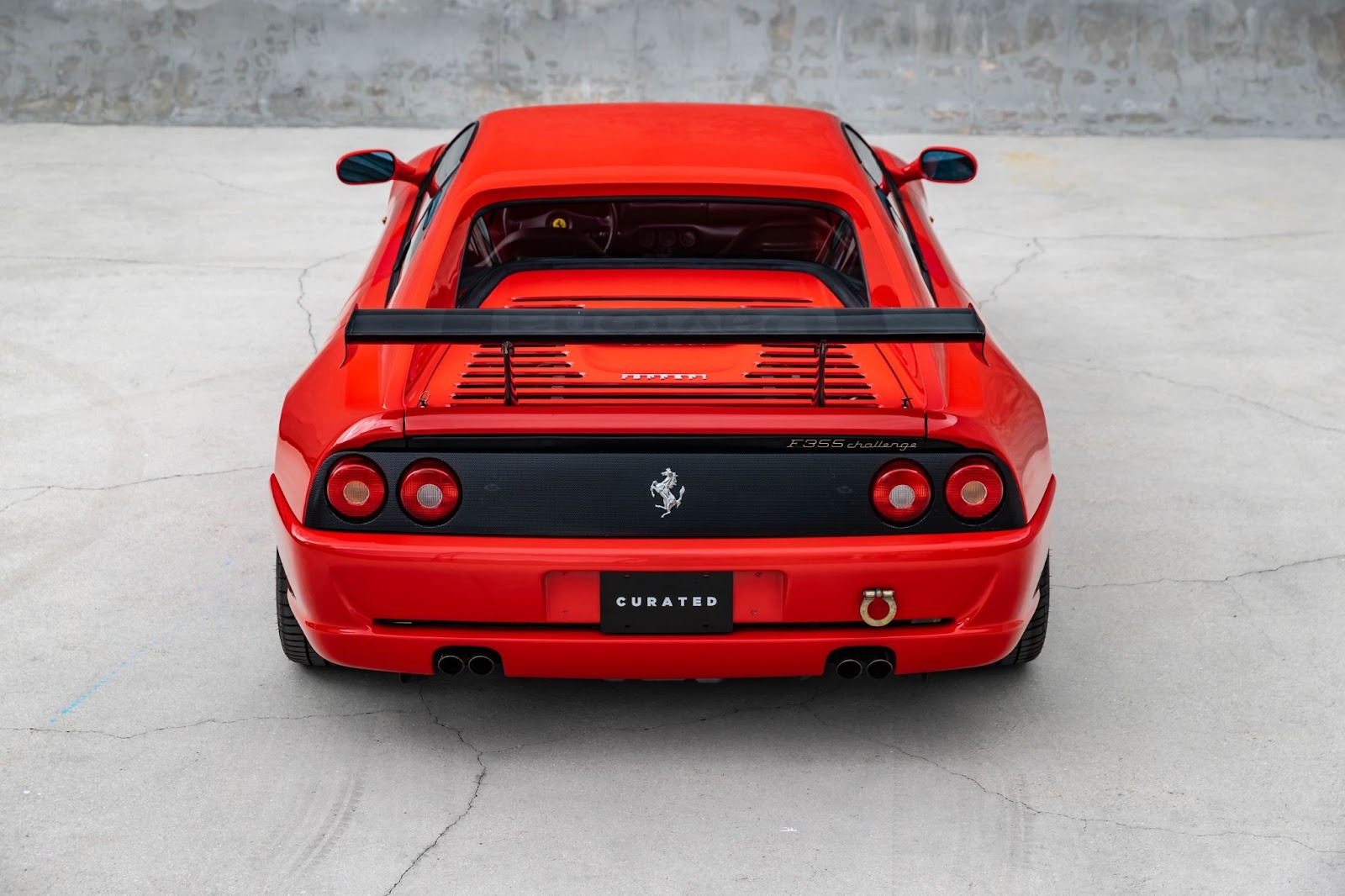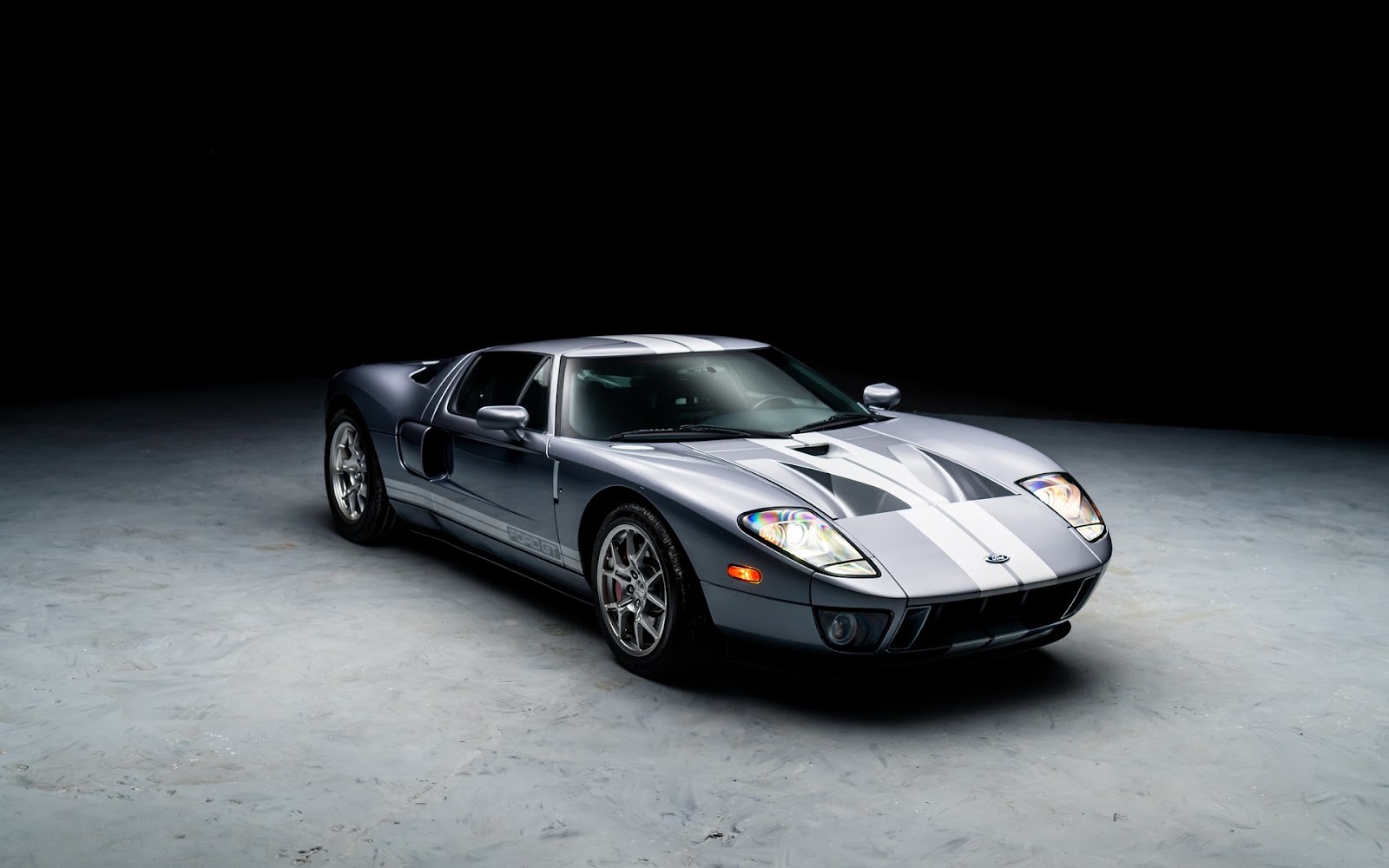Why the Ferrari F355 Still Feels So Alive Today
More than a 1990s supercar, the F355 marked Ferrari’s return to form. It combines precision engineering with pure engagement, reminding drivers that performance is most rewarding when skill, not software, sets the limit.

When the Ferrari F355 debuted at the 1994 Geneva Motor Show, it carried a specific burden: proving that Ferrari could answer the Honda NSX.
The NSX had set a new benchmark in the mid-engine exotic segment, alongside Ferrari's 348. Honda's approach emphasized everyday usability, with reliable cold starts, smooth gear changes, and precise handling that demonstrated a different philosophy from Ferrari's more visceral, driver-focused 348. So, Ferrari had to take a step forward!
Luca di Montezemolo, freshly returned as Ferrari's president, responded not with excuses but with a new model. The F355 addressed every 348 weakness: a coolant heat exchanger solved cold-start gearbox clunkiness, rod-driven shifter actuation replaced vague cable operation, hydraulic power steering made parking manageable. The most significant element was the engineering of a suspension that could be both effective on mountain roads and compliant in city traffic.
As a result, the new F355 sold 11,273 units, making it the most-produced Ferrari at the time. More tellingly, it was selling based on merit. The F355 wasn't cheaper or flashier than competitors. It was simply better engineered and, oddly for a Ferrari at the time, genuinely usable.
Today, the F355 occupies an intriguing space: analog enough to feel special, modern enough to be driven regularly.
The Five Valves Changed Everything
The F355's greatest innovation sat invisible inside the Tipo F129B engine block. Five valves per cylinder (three intake, two exhaust) fundamentally changed how the engine breathed.
The configuration allowed superior intake charge velocity and more efficient scavenging. The result: an engine that could rev to 8,250 rpm while extracting maximum power from minimal displacement. At 3.5 liters with 375 horsepower, the F355 achieved 107 horsepower per liter, which was the highest specific output of any naturally aspirated production engine at the time.
Displacement increased only slightly from the 348's 3.4 liters, accomplished through a 2mm bore increase. The real gains came from lightweight internals: titanium connecting rods forged from Ti6-Al-4V alloy, forged alloy pistons, and an 11:1 compression ratio paired with dry-sump lubrication. These changes let the engine rev freely without accumulating reciprocating mass that would slow response.
The Bosch Motronic 2.7 engine management system (upgraded to M5.2 in 1996) controlled fuel injection and ignition with precision that made the F129B smoother from cold starts than the 348's carburetors-turned-injection setup. Paolo Martinelli, the designer of this engine, had created a true powerplant that was simultaneously thrilling and refined, delivering 268 lb-ft of torque across a broad plateau.
In terms of performance, the F355 did 0-60 mph in 4.6 seconds, with 183 mph top speed. But that's not all! The F355's V8 delivered power with such linearity and smoothness that the driving experience felt effortless.

Here is a quick comparison between the F355 and the older 348.

Chassis Dynamics
Ferrari engineers built a steel monocoque with tubular rear subframe, which was not revolutionary, but intelligently executed. The structure was rigid enough for precision steering and compliant enough that the F355 could be driven daily.
The double wishbone suspension at all four corners used electronic dampers that monitored road speed, brake pressure, suspension load, and steering input. Drivers were able to select between "Comfort" and "Sport" modes. Comfort made the F355 genuinely usable in traffic; Sport tightened everything for adventurous driving. This adaptability was quite revolutionary for a 1990s supercar.
The F355 had a fully flat underbody with an integrated rear diffuser that created significant downforce without the need for an aggressive wing. Pirelli P Zero tires (225/40ZR-18 front, 265/40ZR-18 rear) provided the grip necessary to exploit the chassis's capabilities. The variable-ratio hydraulic steering offered light effort for parking while maintaining high-speed communication. You could feel the road texture through the rim at highway speeds.
Braking came from large ventilated discs developed with Brembo, paired with ABS that enhanced control without intruding during normal driving.
Ferrari claimed the F355 lapped Fiorano seven seconds faster than the 348. This was not surprising given the suspension advances and aerodynamic efficiency in the F355.
Design

What about the F355’s design? The legend goes that Maurizio Corbi, working under design director Lorenzo Ramaciotti at Pininfarina, faced a delicate assignment: evolve the 348 without losing Ferrari identity.
The solution was elegant. The Testarossa-inspired side strakes disappeared, and instead a single sculpted air intake was installed in each door. In this way, the profile became more fluid: the flying buttresses channeled air toward the rear; plus, the twin round taillights honored the Ferrari tradition. The pop-up headlights, the last Ferrari to feature them, gave the front end a clean aesthetic when retracted.
The optional Scuderia wing shields (enameled emblems on the front fenders) became instant collectibles. The Challenge-style rear grille improved engine bay cooling while adding visual aggression. The driver was positioned slightly closer to the centerline in the asymmetric seating arrangement, which showed an obsessive focus on driving dynamics instead of cabin symmetry.
A couple of decades later, the F355's design has aged better than most contemporary exotic cars. It avoids the outdated design that plagued many 1990s supercars. The proportions simply work: modern enough to feel relevant but classical enough to evoke heritage. Pininfarina produced a design that transcended its time but did not become timeless in a way that made it irrelevant.
The F355 Family
To satisfy different driver preferences, the F355 was offered in three different body styles, each with its own exceptional mechanical underpinnings while offering unique open-air or coupe experiences.
F355 Berlinetta

The Berlinetta represented the F355 in its purest form. As a fixed-head coupe, it offered maximum structural rigidity and thus the sharpest handling. The flying buttresses were most dramatic here, creating a classic fastback profile. Ferrari built 4,871 Berlinettas (43% of total production), of which 3,829 came with the 6-speed manual transmission.
Berlinetta’s values have appreciated faster than other variants. Square Mile reported in 2024 that the prices of excellent-condition Berlinetta have nearly quadrupled since 2019, reaching six-digit valuations depending on color, history, and provenance.
F355 Spider

Introduced in 1995, the Spider featured a power-operated soft top (Ferrari's first) which retracted in 6.5 seconds, stowing beneath a canvas cover. Ferrari reinforced the chassis to compensate for lost structural rigidity, successfully maintaining much of the Berlinetta's dynamic character.
The Spider proved wildly popular, representing 3,717 units (34% of production). Of these, 2,664 came with manual transmissions. Today, this model maintains its valuation, with OctoClassic reporting Spider values up 6.1% year-over-year.
F355 GTS

The GTS offered a removable hard-top panel stored behind the seats, which was an engineering compromise that provided coupe security with optional open-air motoring. There were 2,577 built (23% of production), making it the rarest variant.
The GTS achieved neither the Berlinetta's structural rigidity nor the Spider's full convertible experience, resulting in a slightly lower collector demand.
Manual vs. F1
In 1997, Ferrari introduced a revolutionary option: the F1 electrohydraulic transmission. It used a conventional 6-speed manual gearbox but operated it via steering wheel-mounted paddles, with electronic clutch actuation. The shift times were lightning-quick by 1990s standards.
The reality proved more complex than the promise. On track, the F1 transmission was brutal: instant upshifts, lethal downshifts, no sentiment. In city traffic, it could be jerky. The clutch engaged abruptly at low speeds and the first gear required patience. Also, the early systems lacked the refinement modern dual-clutch boxes provide.
The manual gearbox, by contrast, was pure mechanical engagement. Ferrari's polished metal gate guided each shift with tactile precision. The clutch was progressive, and the rod-operated linkage offered feedback that made the 348's cable system feel subpar.
The market preference is decisive: manual F355s command 30% premiums over F1 equivalents. This gap reflects collector preference for the analog experience and the F1 system's higher maintenance costs.
The Challenge Program and Serie Fiorano

Let’s spend a minute talking about the F355’s racing legacy. The F355 Challenge was a factory-modified Berlinetta sold to customers competing in the Ferrari Challenge Trophy. A $30,000 factory kit added roll cages, racing bucket seats, upgraded Brembo brakes, fire suppression systems, and Speedline magnesium wheels. Only 108 official Challenge cars were built globally!
For the 1999 final model year, Ferrari released something different: the Serie Fiorano limited edition. Only 104 Spiders were built (100 planned plus four additional units). These came equipped with the Fiorano Handling Pack, which included a wider track, stiffer springs, thicker anti-roll bars, competition-spec steering rack, and cross-drilled brake discs. Carbon-fiber inserts adorned the center console and door sills. A suede-covered steering wheel added tactile appeal.
The Serie Fiorano represented the ultimate street F355: sharper than standard cars, but civilized enough for regular driving. U.S. cars came with numbered dashboard plaques. By the way, due to all these, today the Serie Fioranos command significant premiums, depending on transmission choice and condition.
Market Dynamics
The super car market is projected to reach over $150 billion by 2035, and the F355 is positioned perfectly for growth.
The average F355 owner age is between 50-60 years old. These are people who fantasized about owning F355s in the 1990s and can own them now. And it’s actually worth it!
The F355 checks every collectability box: legendary manufacturer, renowned designer (Pininfarina), limited production (11,273 units), exceptional performance, and critical "last of its kind" status. It was the final Ferrari with pop-up headlights, the last before the digital revolution became standard, and the last where manual transmissions dominated sales (76% manual vs. 24% F1).
Media presence reinforces the desirability of this model. The F355 has made appearances in The Fast and the Furious, Transformers: Rise of the Beasts, and numerous other movies. Restomods have also begun to target the F355, which is a significant sign that the model is entering prime collectability territory.
Truly collectible F355s share common traits: complete service history, original paint and interior, desirable colors, rare options like Fiorano handling pack or Scuderia shields, and most critically, manual transmission. F1-equipped cars, while appreciating, trail manual variants consistently.
Purchasing an F355
At Curated, we understand that the F355 requires meticulous attention to detail. Each F355 we offer undergoes thorough preparation prior to delivery, ensuring you can concentrate solely on the driving experience without worrying about the upcoming service needs.
Every F355 has well-documented service requirements that we proactively handle.
Timing belt service is the most significant maintenance item that requires full engine removal, typically a 40-hour job performed every five years. We ensure that this critical service is completed prior to delivery if needed.
Early F355s experienced premature valve guide wear, causing oil consumption and smoke upon startup. We thoroughly inspect and address any issues with the valve guide, ensuring proper compression and clean operation.
Factory headers for exhaust manifolds may be prone to cracking due to thermal cycling. To prevent future failures, we inspect and replace manifolds as needed.
For F1-equipped cars, we service or replace accumulator spheres and actuator pumps to ensure crisp, reliable shifts.
When it comes to the interior, we address any sticky plastic issues and document the interior condition, with restoration completed where necessary.
Why This Matters
When you purchase an F355 from Curated, you are guaranteed complete service documentation and the assurance that major maintenance issues have been resolved. This means you can immediately enjoy that awesome V8 wail between 6,000 and 8,250 rpm, the tactile shifter engagement, and precise steering feedback without worrying about service issues.
Summary

The F355 arrived at the perfect moment and left at the perfect time. The F355 represented advanced technology, including electronically controlled dampers, optimized aerodynamics, sophisticated engine management, and even an early F1-style transmission. Yet it remained fundamentally unapologetic about being a mechanical device. The steering was both hydraulic and able to communicate effectively. The engine breathed air naturally and delivered power in a linear manner. The brakes worked predictably. The clutch engaged progressively. Your inputs were all natural: not interpreted or moderated.
By today's standards, it is increasingly rare. Modern supercars, for all their technological sophistication, filter driver input through layers of electronic mediation. The F355 doesn't. When you accelerate, the wheels respond to the tires gripping the road. When you brake, the deceleration reflects brake effort. When you turn the wheel, the car turns proportionally to your input. The feedback loop remains intact.
As automotive technology marches toward hybrid systems, electric powertrains, and autonomous assistance, vehicles like the F355 become historically significant simply by existing. This explains the collector market's fascination. Younger enthusiasts never experienced cars where talent mattered. Older enthusiasts see the F355 as the last breathing machine before the digital age fundamentally changed the relationship between drivers and automobiles. The F355 perfectly represents that liminal moment: advanced enough to be truly fast and capable, yet simple enough to extract performance rather than algorithms.
After the F355, Maranello would build faster, more powerful, and more reliable machines. The 360 pioneered aluminum construction. The F430 perfected paddle-shift transmissions. The 458 completely rewrote the supercar template. But the F355 brought forth a philosophy that engineering should enhance human involvement instead of replacing it.
Time has validated this approach. While the 360 feels dated and the 348 feels inadequate, the F355 simply feels right. It's the Ferrari that aged best because it refused to become obsolete. Today, the F355 remains genuinely usable, genuinely fast, genuinely engaging.
In one sentence: in an era obsessed with connectivity and convenience, the F355's very lack of compromise has become its greatest asset.
About Curated
The F355 is the exact type of European supercar from the golden age that Curated was established to preserve. The F355 is a classic example of a truly analog mid-engine Ferrari that deserves careful stewardship. At Curated, we educate F355 owners and prospective buyers on how to properly maintain these cars, including navigating engine-out services and understanding market dynamics. Whether you're considering acquisition, need guidance on specialist selection, or want to ensure their F355 is preserved correctly, our goal is to help enthusiasts like yourself enjoy these cars while preserving their place in automotive history.














.webp)
